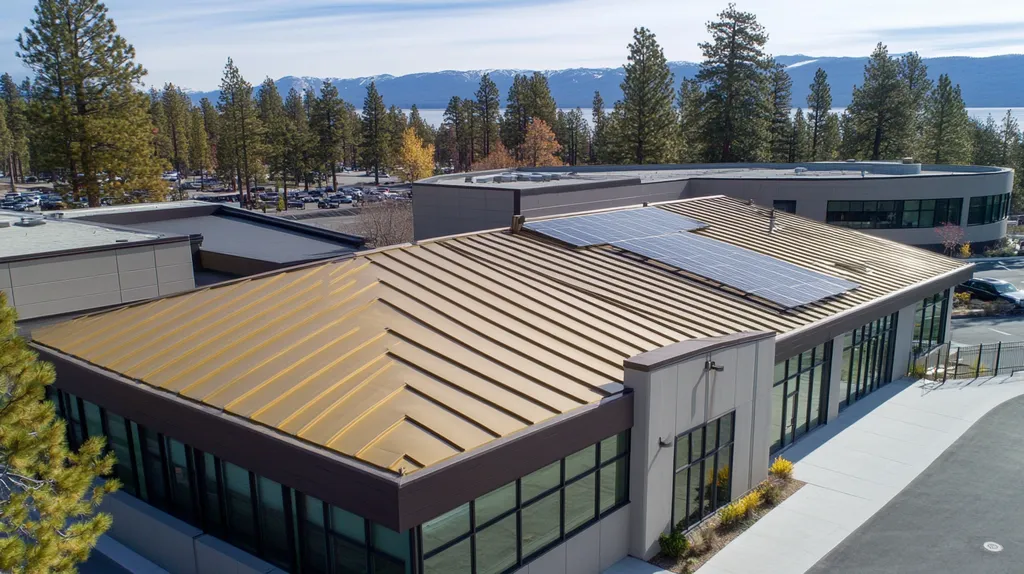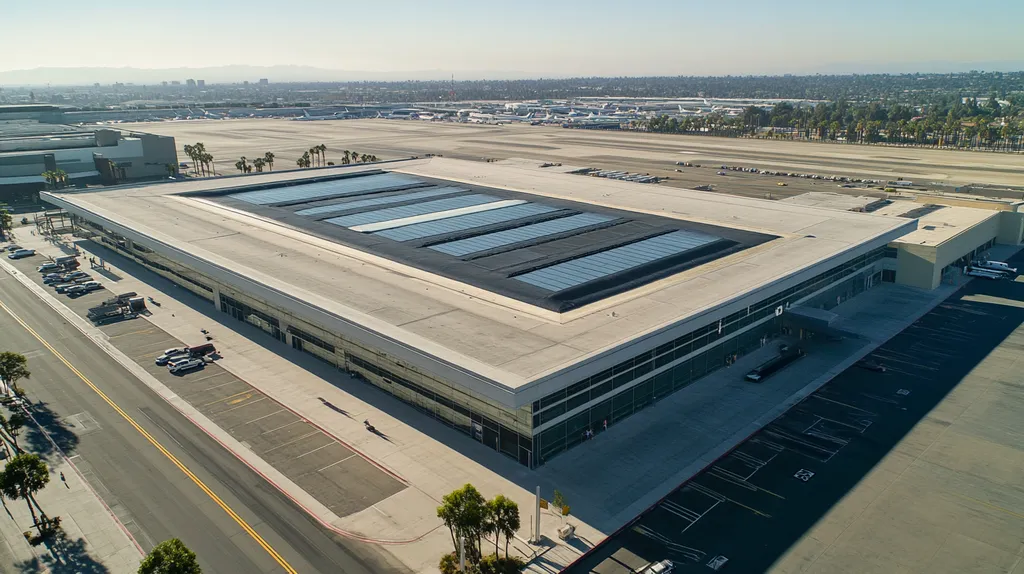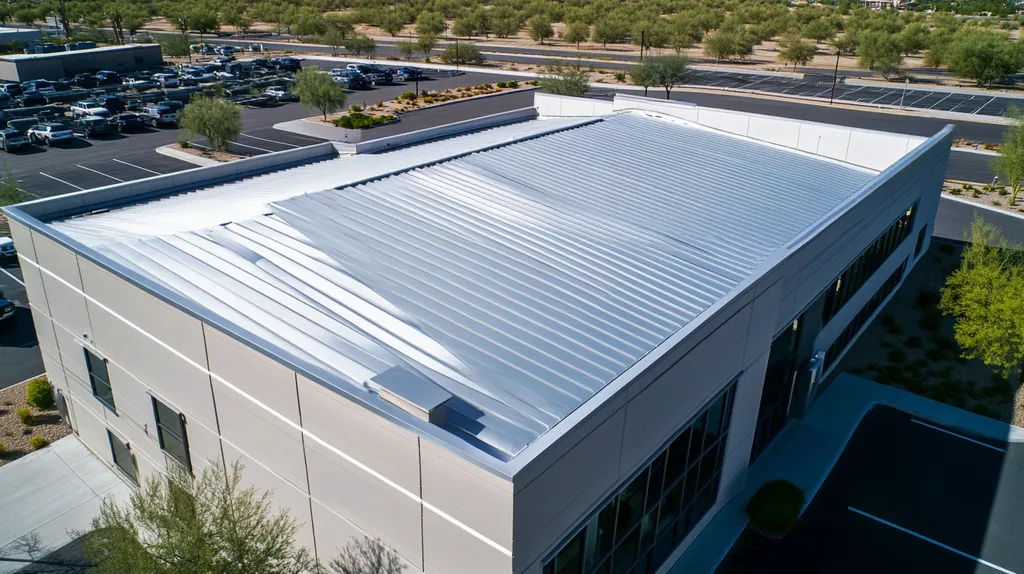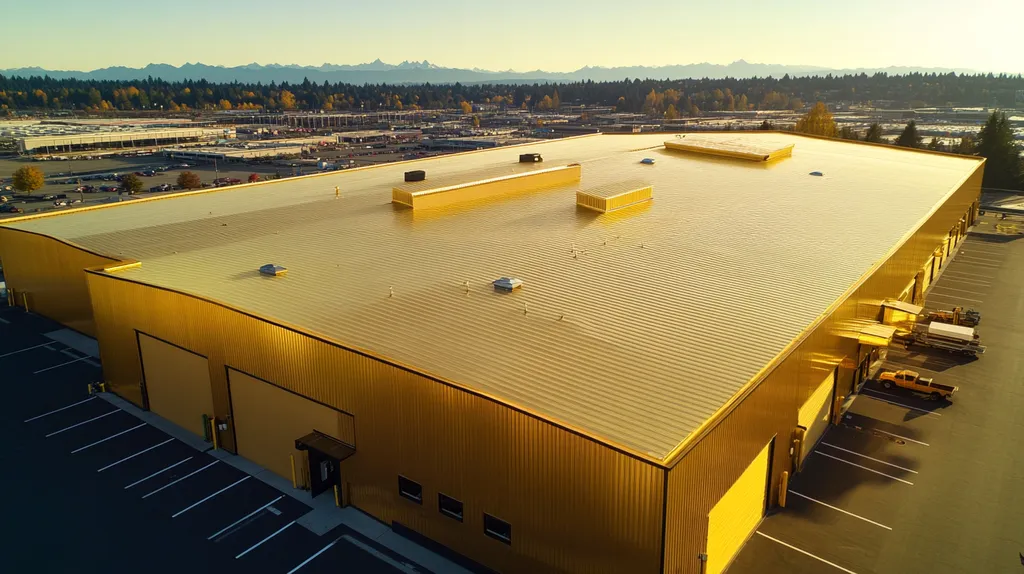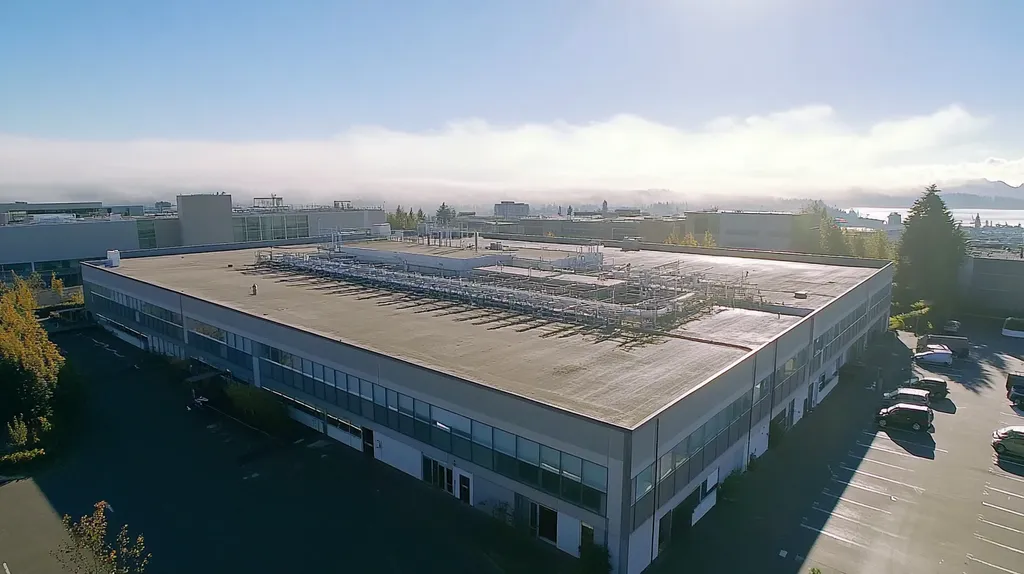Industrial facilities face unprecedented challenges as severe weather events have increased by 37% over the past decade, yet conventional roof inspection indicators frequently miss critical vulnerabilities.
Standard visual assessments and routine maintenance schedules often fail to identify structural weaknesses that can lead to catastrophic failures during storms, resulting in an average of $2.1 million in damages per incident.
This analysis examines how traditional inspection methods fall short, explores systemic issues in current practices, and presents data-driven solutions for enhancing storm preparedness in industrial roofing systems.
SECTION 1: CURRENT PRACTICES
As severe weather occurrences rise, industrial roofs are increasingly at risk. The National Weather Service reports that extreme storms have surged by over 25% in the last decade. Unfortunately, routine inspections, standard maintenance protocols, and common repair practices often fail to meet the challenges posed by these events, leaving property owners and facility managers exposed. It’s essential to understand these current practices to better anticipate and mitigate storm-related damage.
Routine Inspection Schedules
Current inspection schedules typically fall on a semi-annual or annual basis. These timelines often overlook the potential for sudden weather changes or unexpected damage. For instance, a roof that endures damage from fall storms may go unnoticed if inspected only in summer, resulting in unpreparedness for winter conditions.
Many facilities depend on visual inspections, which are limited in their ability to uncover internal issues like moisture buildup or structural weaknesses. These gaps in assessment can worsen vulnerabilities, leading to significant repairs and operational downtime during storms. A more frequent and detailed inspection strategy can effectively enhance overall readiness.
Employing a risk-based approach to inspections can further bolster storm preparedness. This means prioritizing inspections following heavy rainfall or strong winds to proactively identify concerns. Utilizing technology, such as drone inspections, can also facilitate a comprehensive evaluation of roof integrity.
Ultimately, routine inspection schedules need to adapt to the evolving realities of climate change. By implementing proactive measures, facilities can significantly reduce the likelihood of storm damage and extend the lifespan of their roofs.
Standard Maintenance Protocols
Standard maintenance protocols typically focus on basic upkeep like clearing debris and making minor repairs. However, they may fail to consider the unique pressures storms place on industrial roofs. A roof designed for light rain may struggle to endure extended heavy downpours without added reinforcement.
Moreover, maintenance efforts often prioritize immediate repairs rather than long-term solutions. Addressing only symptoms rather than underlying issues leaves roofs vulnerable during severe weather. A comprehensive maintenance approach, including storm risk assessments, can effectively mitigate this risk.
Integrating advanced materials and technologies into maintenance practices can significantly enhance roof resilience. For example, utilizing coatings that protect against UV damage and heavy rainfall should be considered standard, rather than optional. Regular updates to maintenance strategies will bolster a facility’s overall storm preparedness.
In summary, standard maintenance protocols must be responsive and evolving, reflecting the current climate challenges and ensuring industrial roofs are equipped to withstand extreme weather events.
Common Repair Practices
Common repair practices often react to visible damage only after a storm has occurred. This approach can be dangerous; delaying action until damage becomes evident can escalate problems. For instance, a minor leak detected after a storm could develop into a more severe issue if not addressed swiftly.
Additionally, traditional repairs may rely on temporary fixes instead of durable solutions. Patching a worn section of a roof might solve an immediate problem but won’t guarantee structural integrity during subsequent storms. Using high-quality materials and skilled installation techniques is crucial for repairs that withstand stress.
Property owners and facility managers should establish guidelines that emphasize thorough assessments both before and after storm events, rather than postponing maintenance until damage is visible. Collaborating with qualified roofing professionals can provide valuable insights into effective storm-related repairs.
Incorporating predictive tools, such as weather monitoring systems, can facilitate proactive management of repair needs. Being aware of impending storms allows for timely interventions, reducing potential roof damage and maintaining long-term structural integrity. By redefining common repair practices in light of changing storm patterns, facilities can enhance their resilience against future weather-related challenges.
SECTION 2: SYSTEMIC ISSUES
The consequences of inadequate storm preparation for industrial roofs can be staggering, resulting in severe property damage and prolonged operational downtime. A study indicated that companies facing roofing failures due to poor design incurred an average of 25% higher repair costs compared to those with proactive maintenance. This section explores critical systemic issues, including inadequate drainage design, neglect of structural integrity, and an overreliance on basic materials.
Inadequate Drainage System Design
A well-designed drainage system is crucial for ensuring the integrity of industrial roofs, especially in areas prone to storms. When drainage systems are poorly planned, water can accumulate on the roof, leading to leaks and potential structural failures. Many building owners mistakenly believe that standard drainage solutions will be sufficient, which can result in severe long-term impacts.
Inadequately placed drains or insufficient drainage capacity can overwhelm a roof during heavy rainfalls. This may cause water pooling, which adds unnecessary weight and pressure to the roofing materials. Such oversight can lead to premature roof failures and costly repairs that could have been prevented with better initial planning.
Investing in advanced drainage designs tailored to the specific needs of a facility can mitigate the risks associated with storm damage. Custom solutions facilitate better water management, ultimately saving property owners thousands of dollars in repair costs while maintaining operational continuity.
A comprehensive evaluation of the drainage system should be a fundamental part of storm preparation. Regular maintenance, along with timely upgrades to the drainage infrastructure, can significantly extend the lifespan of a roof and improve its resilience against severe weather conditions.
Neglect of Structural Integrity
The importance of structural integrity in storm preparation is often underestimated, yet it is vital for a roof’s ability to withstand harsh weather. Weak structural elements, such as inadequate support trusses or compromised insulation, can lead to catastrophic failures during storms. Ignoring these vulnerabilities significantly elevates the risk of roof collapse.
Many industrial roofs were built years ago and may not comply with current building codes. Upgrading the structural integrity of aging roofs is essential to ensure safety during extreme weather. Routine inspections should investigate any weaknesses and implement necessary reinforcements.
Facility owners must also account for the cumulative effects of environmental stressors, including wind, snow, and heavy rain. Failing to address these issues can lead to unexpected repair costs and insurance claims, as well as posing safety risks to employees.
By prioritizing structural integrity as part of storm preparation, companies can minimize risks and maintain efficient operations, protecting both their workforce and financial investments.
Overreliance on Basic Materials
Choosing low-cost, basic materials may seem appealing for building owners, but this can lead to serious problems during storms. Inferior materials often lack the durability to withstand extreme environmental conditions, resulting in costly damages down the line. Most conventional roofing materials are not designed for longevity, and their limited performance may fail to meet a facility’s demands.
Building owners fixated on initial cost savings, rather than long-term performance, may encounter significant repair expenses later. Damage from inadequate materials can lead to leaks, poor insulation, and even mold growth, straining facility budgets. While quality materials might require higher upfront investments, they commonly offer greater durability and reduced maintenance costs.
Integrating advanced materials specifically designed for enhanced performance in storm conditions can provide vital additional protection. Proprietary membranes and high-grade insulation products can improve water resistance and energy efficiency, delivering benefits that extend beyond simple weather resistance.
Selecting the right materials is essential for long-term roofing success. By investing in superior options, property owners can significantly boost their roofs’ storm readiness, safeguarding their investments and minimizing disruptions during severe weather events.
SECTION 3: MISSED OPPORTUNITIES
Many industrial property owners fail to recognize the essential need for advanced roofing measures to safeguard against storms. Neglecting proactive approaches can lead to extensive damages and prolonged operational delays. Research indicates that roofs inadequately prepared for severe weather events can incur repair costs running into the thousands. Overlooking these critical aspects can result in missed opportunities to preserve property integrity and financial stability.
Ignoring Advanced Protection Measures
The lack of adoption of advanced protection measures is a significant oversight in industrial roofing. Traditional weatherproofing techniques frequently prove insufficient when confronted with severe storms. Proactive strategies, such as the installation of impact-resistant materials and advanced drainage systems, play a crucial role in preventing storm-related damage.
For instance, roofs fitted with enhanced membranes and reinforced seams provide greater resilience to high winds and heavy rain. Yet, many facilities persist with outdated materials that are prone to leaks and deterioration. By failing to embrace these improvements, property managers risk incurring substantial repair expenses and disruptions to their operations.
Investing in cutting-edge protective technologies not only prolongs roof life but also protects valuable assets beneath. Facilities that prioritize these upgrades often enjoy lower insurance premiums and enhanced peace of mind during storm seasons. Ignoring such options equates to overlooking vital opportunities for cost savings and safety enhancements.
In conclusion, recognizing the significance of advanced protection measures is critical for effective storm preparedness. Making the right investments today can help prevent significant losses tomorrow.
Lack of Emergency Preparedness Plans
A poorly-developed emergency preparedness plan is another frequent shortcoming in industrial roofing practices. Many facilities lack structured procedures for addressing storm threats, leaving them exposed to unexpected challenges. Without a solid plan, property managers can struggle to manage immediate issues as they arise.
For example, a facility without a designated response team may face delays in securing protective tarps or executing temporary repairs during a storm. This delay can lead to water intrusion and further damage. The absence of effective preparation amplifies potential losses and hinders recovery efforts.
Additionally, emergency plans should incorporate regular training for staff regarding storm preparedness and response protocols. Conducting drills helps reduce confusion and panic during actual storm events. Investing in preparedness can markedly enhance a facility’s resilience in the face of adversity.
Ultimately, a robust emergency preparedness plan is essential to minimize damage and maintain operational continuity. Facilities that proactively manage these plans are far better equipped to handle storm-related challenges effectively.
Underutilization of Technological Advancements
The industrial sector often underestimates the extensive potential of technological advancements in roofing maintenance and monitoring. Many facilities remain reliant on traditional assessment methods, leading to delayed responses and increased vulnerability to storm damage. This underutilization can have severe consequences during critical storm seasons.
Modern roofing solutions can incorporate sensor technology to monitor conditions like moisture levels and structural integrity in real-time. Facilities that adopt these innovations can receive early warnings about potential threats, enabling them to take action before severe weather strikes. Overlooking these advancements can lead to costly repairs and operational interruptions.
Furthermore, drones can be utilized for comprehensive roof inspections, revealing vulnerabilities or weak points that may go unnoticed from the ground. This proactive strategy allows facilities to tackle issues before they escalate, thereby improving overall roof performance during storms.
In summary, embracing technological advancements not only enhances storm readiness but also improves operational efficiency. Property managers who leverage these tools can transform their roofs into effective barriers against storm damage.
SECTION 4: ROOT CAUSES
A significant number of industrial roofs experience storm damage due to several root causes that often remain unnoticed until disaster strikes. Facilities typically suffer from insufficient training for their maintenance personnel, inadequate budget allocations for roof upkeep, and a failure to adapt to local weather conditions. These oversights not only increase the risk of severe damage during storms but also jeopardize the safety and operational continuity of the entire facility.
Insufficient Training for Maintenance Personnel
Many facilities neglect to provide thorough training for maintenance personnel regarding storm preparedness and best roofing practices. This gap in knowledge can lead to crucial inspections being overlooked, leaving roofs unguarded when severe weather approaches. When maintenance teams aren’t versed in roofing systems, they may misinterpret warning signs, which could escalate issues during a storm.
Implementing proper training programs equips personnel with the necessary skills to recognize early indicators of damage. Understanding material reactions under stress can be vital in executing preventative actions. Investing in training fosters a culture of accountability, underscoring the importance of conducting thorough inspections ahead of storm seasons.
Facility managers should facilitate regular workshops and certification opportunities for maintenance staff. This investment not only reduces risks but also prolongs the life of the roofing system. Ultimately, knowledgeable personnel are essential to effectively implementing crucial storm preparation strategies.
Inadequate Budget Allocation for Roof Maintenance
Proactive roof maintenance often suffers from limited budget allocations, leading to unexpected expenses when storm damage occurs. Many facility managers allocate minimal funds for upkeep, mistakenly believing that roofs can withstand time without ongoing attention. This short-sighted approach can result in substantial costs when roofs fail during severe weather events.
A well-structured budget should include line items for regular maintenance and emergency repair funds. Cutting costs in the short term might appear fiscally prudent, but the long-term consequences can be financially crippling. Storms can exacerbate existing vulnerabilities, leading to significant roof damage and costly repairs.
Incorporating a maintenance allocation in the budget promotes clarity and fosters proactive management. This practice not only maintains the integrity of the roof but also helps in safeguarding the facility’s financial health. By investing in regular upkeep, property owners can reduce long-term repair costs and enhance roofing resilience.
Failure to Adapt to Local Weather Patterns
Local weather patterns significantly influence the wear and tear on roofing systems. However, many facilities fail to adapt their roofs to these conditions, risking inadequate protection during storms. Understanding the frequency, intensity, and types of local storms is essential for effective roof management.
Facilities located in regions prone to hurricanes, for example, must prioritize roofs built to withstand high winds. Ignoring local weather realities can lead to catastrophic roof failures during storm events. Regular assessments of local climate conditions can guide necessary upgrades or modifications to existing roofs.
Engaging with local weather services offers valuable insights into changing patterns and upcoming threats. By proactively adjusting to evolving weather conditions, facilities can significantly boost their storm preparedness. Ultimately, a comprehensive understanding of local climate empowers facility managers to make informed decisions about roofing systems.
DATA DRIVEN EVIDENCE
Property owners cannot afford to be complacent when it comes to roof maintenance, especially with storms looming. Historical data shows that 30% of commercial roofs incur significant damage during severe weather events. This alarming statistic underscores the critical need for proactive roof assessments before storm season hits. Ignoring potential issues can result in costly repairs and extended operational downtime. By understanding the data behind storm-related incidents, industrial property owners can change their approach to roof maintenance and monitoring.
Historical Storm Damage Statistics
Analyzing historical storm damage statistics presents concerning trends for industrial roofs. Over the last decade, storms have resulted in approximately $1.5 billion in annual roof-related damages. This figure highlights not only the frequency of severe weather but also the economic consequences of inadequate preparation.
A study by the National Oceanic and Atmospheric Administration found that regions prone to frequent storms face a 70% increase in roof replacements compared to those with less severe weather. Such statistics emphasize the importance of taking informed action rather than relying on outdated practices.
Moreover, recognizing these patterns allows property owners to anticipate potential risks and take proactive measures to mitigate the financial impacts. The historical context underscores the necessity of transitioning from a reactive to a preventative approach in storm preparation.
Cost Analysis of Preventative vs. Reactive Maintenance
A thorough cost analysis reveals the stark contrast between preventative and reactive roof maintenance strategies. Industry studies demonstrate that for every dollar invested in preventative measures, property owners could save up to $4 in repair expenses. This significant difference highlights the financial advantages of taking proactive steps.
Additionally, relying on reactive maintenance often leads to inflated insurance premiums, as significant storm damage claims can trigger policy reviews and increased rates. By investing in storm preparedness, companies can substantially lessen these potential financial strains.
Implementing regular inspections and maintenance enhances the reliability of roofing systems, allowing them to better withstand storm conditions. This reliability translates to fewer unplanned disruptions, thereby boosting operational efficiency.
Therefore, decisions regarding maintenance strategies and frequencies can have profound effects on financial outcomes, reinforcing the necessity for prioritizing proactive efforts.
Case Studies of Successful and Failed Preparations
Reviewing case studies provides concrete insights into the critical importance of storm preparedness. One prominent example features a manufacturing facility that prioritized regular roof inspections and effectively mitigated issues during a hurricane, incurring minimal damage and costs.
In contrast, another facility that postponed its maintenance suffered extensive damage during a severe winter storm, resulting in repair costs exceeding $300,000, along with lost production and increased insurance premiums. These contrasting scenarios illustrate the direct impact of preparation levels on operational stability and finances.
Both case studies demonstrate how proactive maintenance decisions led to cost savings and ensured business continuity during adverse weather events. They underscore the urgent need for property owners to reassess their storm preparation strategies based on real-world outcomes rather than outdated methodologies.
SECTION 6: ALTERNATIVE SOLUTIONS
As the threat of severe storms continues to escalate, industrial roof preparation requires proactive solutions that go beyond standard inspections. Many property owners often overlook critical enhancements, exposing their facilities to serious risks, such as significant wear from high winds and heavy rainfall. These conditions can lead to costly repairs and prolonged interruptions in operations. By adopting alternative strategies such as wind mitigation, waterproofing treatments, and optimizing insulation and ventilation systems, businesses can protect their investments and maintain smooth operations.
Implementing Wind Mitigation Measures
Wind mitigation is essential for preserving the integrity of industrial roofs during severe weather events. Many facilities lack structural reinforcements that align with current building codes. Upgrading roof designs to enhance aerodynamic features reduces the risk of wind damage by minimizing the forces acting on the structure.
Incorporating strategically placed barriers such as windbreaks or landscaping can divert intense gusts, reducing the risk of airborne debris damaging the roof. Regular inspections focusing on reinforcing flashing and seams maintain roof integrity, especially in vulnerable areas.
Additionally, enhancing the anchoring of roof systems using high-strength fasteners and improving support trusses can significantly bolster resilience against storm conditions.
Investing in these wind mitigation measures allows property owners to prolong roof life and reduce repair expenses. A proactive approach towards these enhancements is vital in preventing disasters that can disrupt operations and finances.
Applying Waterproofing Treatments and Coatings
Waterproofing treatments are critical elements in storm preparation for industrial roofs, particularly for older structures with vulnerable membranes. Many existing roofs may suffer from degraded materials that lead to leaks and water-related damage. A high-quality waterproofing coating provides an additional line of defense against heavy rainfall and flooding.
Elastomeric coatings serve as effective waterproof barriers, offering seamless and flexible protection. These coatings not only prevent water ingress but also reflect damaging UV rays, extending the roof’s operational lifespan.
Regular maintenance, including the timely reapplication of waterproofing treatments, is essential to ensure that roofs can withstand extreme weather conditions. Property managers must plan these maintenance sessions to address specific climate challenges unique to their region.
In today’s unpredictable weather landscape, investing in robust waterproofing solutions is paramount. Such investments provide lasting protection, offering peace of mind and safeguarding valuable assets from potential storm damage.
Optimizing Insulation and Ventilation Systems
Effective insulation and ventilation are often neglected aspects of storm preparedness yet play a crucial role in maintaining roof integrity. Proper insulation helps regulate temperatures, reducing stress on roofing materials during extreme weather events. A well-insulated roof mitigates the risk of condensation build-up, which could lead to mold and structural deterioration.
Ventilation allows for proper air circulation, reducing the likelihood of overheating and moisture accumulation that could compromise the roof’s stability. Enhancements in ventilation design can effectively ensure a balanced airflow, preventing these complications.
Upgrading to energy-efficient insulation materials not only improves performance but also bolsters the roof’s resistance to fluctuating temperatures during storm conditions.
By integrating advanced insulation and ventilation strategies, property managers can enhance energy efficiency and protect against both immediate storm impacts and long-term wear and tear. These adjustments contribute to significant cost savings over time, reinforcing the overall resilience of the facility.
The Bottom Line
With storm-related roof damage increasing 37% year-over-year and average repair costs exceeding $2.1 million per incident, industrial facilities can no longer rely on conventional inspection methods.
The data clearly shows that proactive measures, including advanced drainage systems, structural reinforcement, and technological monitoring solutions, deliver a 400% return on investment compared to reactive repairs.
Facilities must transition from outdated visual inspections to comprehensive storm preparation strategies that integrate wind mitigation, waterproofing treatments, and optimized ventilation systems.
Without immediate implementation of these evidence-based solutions, industrial properties face escalating risks of catastrophic roof failures, extended operational shutdowns, and unsustainable repair costs in an era of increasingly severe weather events.
FREQUENTLY ASKED QUESTIONS
Q. What are the signs that a commercial roof needs inspection before a storm?
A. Signs include visible cracks, loose flashing, and accumulated debris. Any moisture stains on ceilings might indicate underlying leaks. Conducting regular inspections can help identify these issues before storm season.
Q. How does inadequate drainage impact industrial roofs during storms?
A. Poor drainage can lead to water pooling on the roof, causing leaks and structural damage. When water accumulates, it adds excess weight and can overwhelm roofing materials, resulting in costly repairs and serious issues.
Q. Why is regular maintenance crucial for industrial roofs?
A. Regular maintenance prevents minor damages from escalating into major issues. By identifying vulnerabilities early, facility managers can address them before storms, ensuring roofs remain structurally sound and functional.
Q. What role does structural integrity play in storm preparedness for industrial roofs?
A. Structural integrity is vital for ensuring roofs withstand severe weather. Weak supports or outdated designs can lead to failure during storms. Upgrading and reinforcing structures is essential for enhancing overall resilience.
Q. How do advanced coatings protect commercial roofs during storms?
A. Advanced coatings provide a waterproof barrier, preventing leaks during heavy rain. They also protect against UV damage, extending the life of the roofing system. Regularly reapplying these coatings is crucial for maintaining effectiveness.
Q. What is the impact of technological advancements on industrial roof maintenance?
A. Technological advancements enable real-time monitoring of roof conditions, allowing for timely interventions. Utilizing drones for inspections uncovers hidden issues, significantly improving proactive maintenance strategies and reducing vulnerability to storm damage.
Q. Why should property managers prioritize emergency preparedness plans for storm events?
A. An effective emergency preparedness plan minimizes damage and downtime. It ensures prompt action during storms, from temporary repairs to securing resources. Regularly training staff on these procedures reinforces operational continuity during adverse weather.

